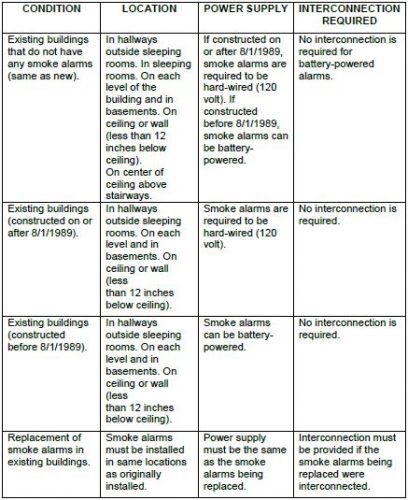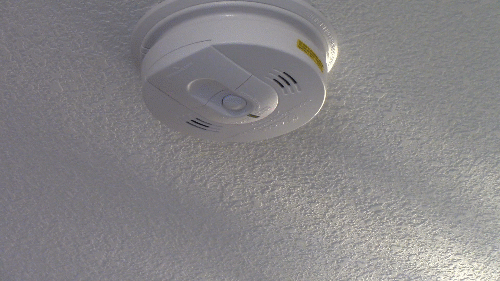Shopping for a new smoke alarm? Stop. Don't even go to the store until you know exactly which smoke alarm you want. I know the ins and outs of smoke and CO alarms, and I'm still overwhelmed by the selection at home improvement stores.

If you prefer this advice in video format, here's that:
Get Photoelectric
There are two types of smoke alarm sensors, ionization and photoelectric. I'll make this very easy for you; only buy smoke alarms with photoelectric sensors. Skip the ionization alarms, and skip the dual-sensor alarms. Check out my old blog post from 2013 for more information on this topic; nothing has changed. Photoelectric smoke alarms are all you need.
Photoelectric smoke alarms say "photoelectric" proudly on the packaging. Ionization alarms don't. This eliminates a lot of the products out there. I blacked out all of the ionization alarms, dual-sensor alarms, and carbon monoxide alarms (I think). That leaves very few options at this particular retail display, which includes CO/smoke alarm combination units.

Isn't that easier? And now for your next option.
Smoke/CO combination, or just smoke alarm?
If you're installing your smoke alarm in the hallway outside of the bedrooms, it makes sense to get a smoke/CO combination alarm. I've heard people complain that combination alarms are no good because carbon monoxide alarms are supposed to be installed low to the ground, but that's not true. CO alarms work just fine when installed high on the wall or on the ceiling.
I've also heard people complain that CO alarms only have a shelf life of 5-7 years, but newer ones are good for a full 10 years, just like smoke alarms. So no worry there either.
Hardwired or battery?
If your existing smoke alarm is hardwired, it should be replaced with a hardwired unit. If your smoke alarms are original to the home, the date of construction should help to tell you what type you have. Here's a handy timeline produced by the Minnesota Department of Public Safety that explains what was required when. Click on the image for a pdf version.

Another simple way to check is to simply detach the smoke alarm from the ceiling and look. Just turn it counter-clockwise and take a peek, like this:

In the clip above, you can clearly see that the smoke alarm is hardwired.
If a hardwired smoke alarm needs to be replaced, it's no big deal. In fact, it's so easy that next week's blog post will consist of a short DIY video showing how it's done.
Interconnected?
If your smoke alarms aren't hardwired, they're probably not interconnected. The benefit to having interconnected smoke alarms is that if one alarm goes off, they all go off. Think of a large home with a smoke alarm in the remote corner of the basement; will the people sleeping in the other corner of the house on the second floor hear that alarm? Will it be loud enough to wake them up? What if there are kids in that room? You get my point. Having interconnected smoke alarms is a good idea.
If your home doesn't have hardwired smoke alarms, consider purchasing smoke alarms that can be wirelessly paired with each other. These are called wireless smoke alarms.
Sealed battery?
If you need to buy battery-powered smoke alarms, consider one with a sealed lithium-ion battery. These smoke alarms have sealed batteries that never need to be replaced, and are good for the life of the smoke alarm, which is 10 years. This isn't a critical safety feature, but given the choice, I'd take the sealed battery vs. having to replace my batteries periodically.
What's important?
You might not be able to purchase exactly what you want, and that's ok. If you have to split up your smoke and CO alarms to get the most important options, go ahead and do it. Just make sure that you have the most important part covered; get photoelectric smoke alarms.
Author: Reuben Saltzman, Structure Tech Home Inspections





